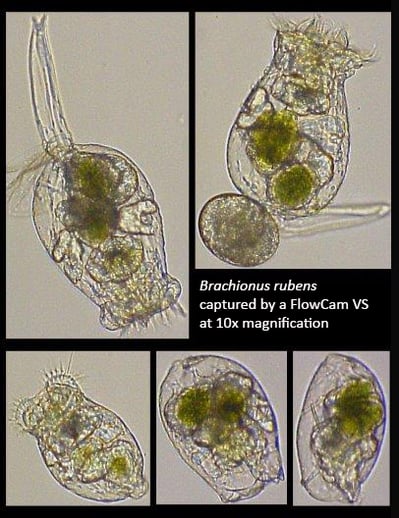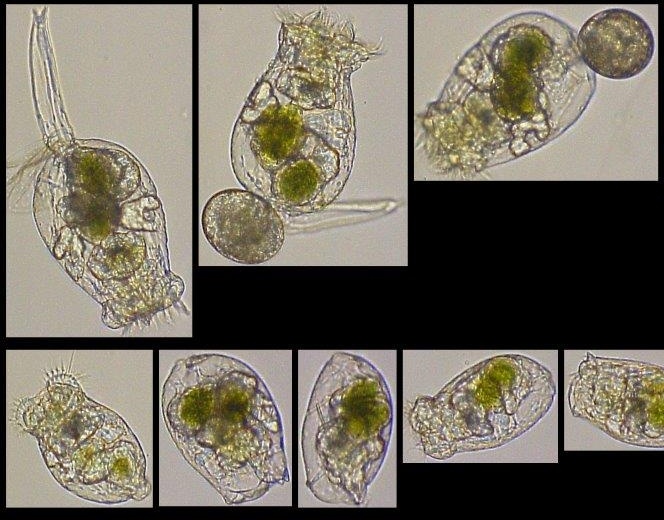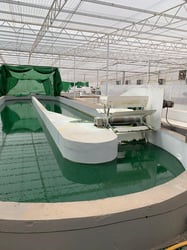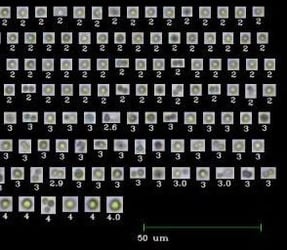Research suggests that microalgal-based biofuels offer a promising alternative to fossil fuels, providing environmental benefits and rapid production rates that could match the modern energy consumption of fossil fuels. However, large-scale algae cultivation, which is utilized in algae-based biofuel production, is susceptible to opportunistic algal crop predators, such as rotifers, which can quickly destroy a large algae population. 
Thus, there is a need to develop a method of early detection and quantification of these potential predatory grazers in algal cultures.
A study from Arizona State University (Wang et al., 2017) tested the capability of the FlowCam to quantify and image low-density populations of predatory zooplankton in high-density algae populations. Read the abstract here.
In this study, Wang et al. tested the ability of the FlowCam to detect and quantify the freshwater rotifer Brachionus calyciflorus, at densities ranging from 0.1 individual/mL to 100 individuals/mL within at algae densities ranging from 105 algae cells/mL to 107 algae cells/mL. According to the results, the FlowCam was able to detect and enumerate rotifer concentrations as low as 1 individual/mL at all algal densities tested. Additionally, the FlowCam was able to complete the detection and quantification of ultra-low rotifer densities (0.1 individual/mL) in sample volumes ranging from 10-20 mL within 10 minutes.
Additionally, a study from the University of Georgia, Athens, (Abou-shanab et al., 2016) used the FlowCam to quantify the effect of predatory rotifer attack by Brachionus rubens on eleven different species of microalgae over a twenty-one-day period. Read the abstract here.
In this study, Abou-shanab et al. used FlowCam to measure changes in algae cell density and biomass productivity over the 21 days of predatory rotifer exposure. Algae samples were imaged, quantified, and analyzed using the FlowCam, and cell size, diameter, length, width, and other parameters were determined by image analysis.
Interested? Learn how FlowCam can be used for early detection of sparse, predatory populations in algae cultivation.
Citations:
Wang, Y., Castillo-Keller, M., Eustance, E., and Sommerfled, M., (2017), Early detection and quantification of zooplankton grazers in algal cultures by FlowCAM. Algal Research, 21, 98-102.
Abou-shanab, R., Singh, M., Rivera-Cruz, A., Das, K., (2016), Effect of Brachionus rubens on the growth characteristics of various species of microalgae. Electronic Journal of Biotechnology, 22.










